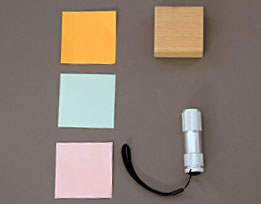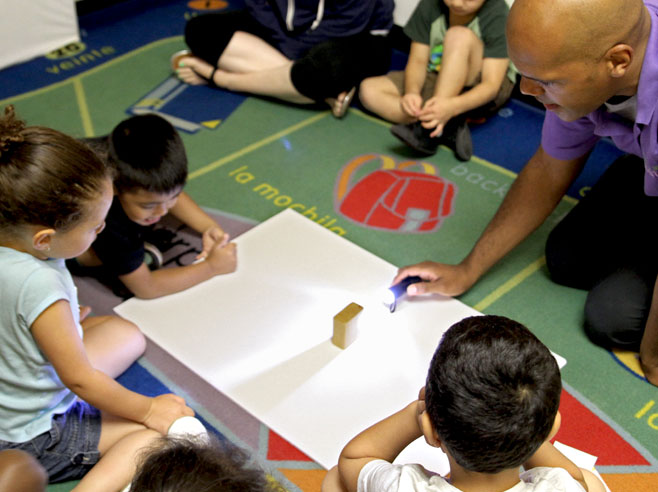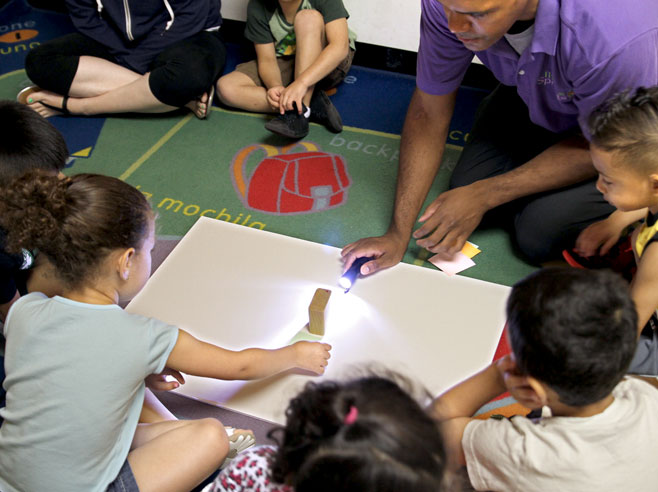Children observe and predict where the shadow will fall when a flashlight is moved to a different side of an object.
Materials

- Flashlight
- 3 sticky notes or small pieces of paper: yellow, blue, and pink
- A block, paper cup, or other simple prop
Preparation
- Darken the Circle Time area so that shadows cast by flashlight can be seen clearly.
Directions: Lesson 10
Circle Time: Introduction
- Aim your flashlight at the block. What do you see? What is making the shadow? (The block is blocking the light. The light cannot shine through the block, so there is a dark area on the opposite/other side of the block. That dark area is the shadow.) Have a child put a yellow sticky note on the shadow.
- Move your flashlight to the left, still aiming the beam at the block. What happens to the shadow when I move the light? Why is the shadow over there now? Have a child put a blue sticky note on the shadow in this new location.
- Move your flashlight to the right of your starting position, still aiming the beam at the block. Where is the shadow now? Why is the shadow there? Have a child put a pink sticky note on the shadow in this new location.
- Encourage children to make predictions. Turn the flashlight OFF and move it back to the starting position. Engage children in a discussion about shadows:
- Let’s do an experiment. If I put my flashlight here, and shine it on the block, where do you predict the shadow will fall? Will it fall on the yellow paper, the blue paper, or the pink paper?
- Why do you think that?
- Who agrees or disagrees with that prediction? Why do you think that?
- Test the predictions and discuss the results. Turn the flashlight ON to see the shadow.
- Were your predictions right?
- Does a shadow appear on the same side of the object as the flashlight (point), or on the opposite/other side of the object (point)?
- Repeat the experiment. Turn the flashlight OFF and move it to the left or to the right. Ask children to again predict where the shadow will fall. (See steps 2 and 3.)


